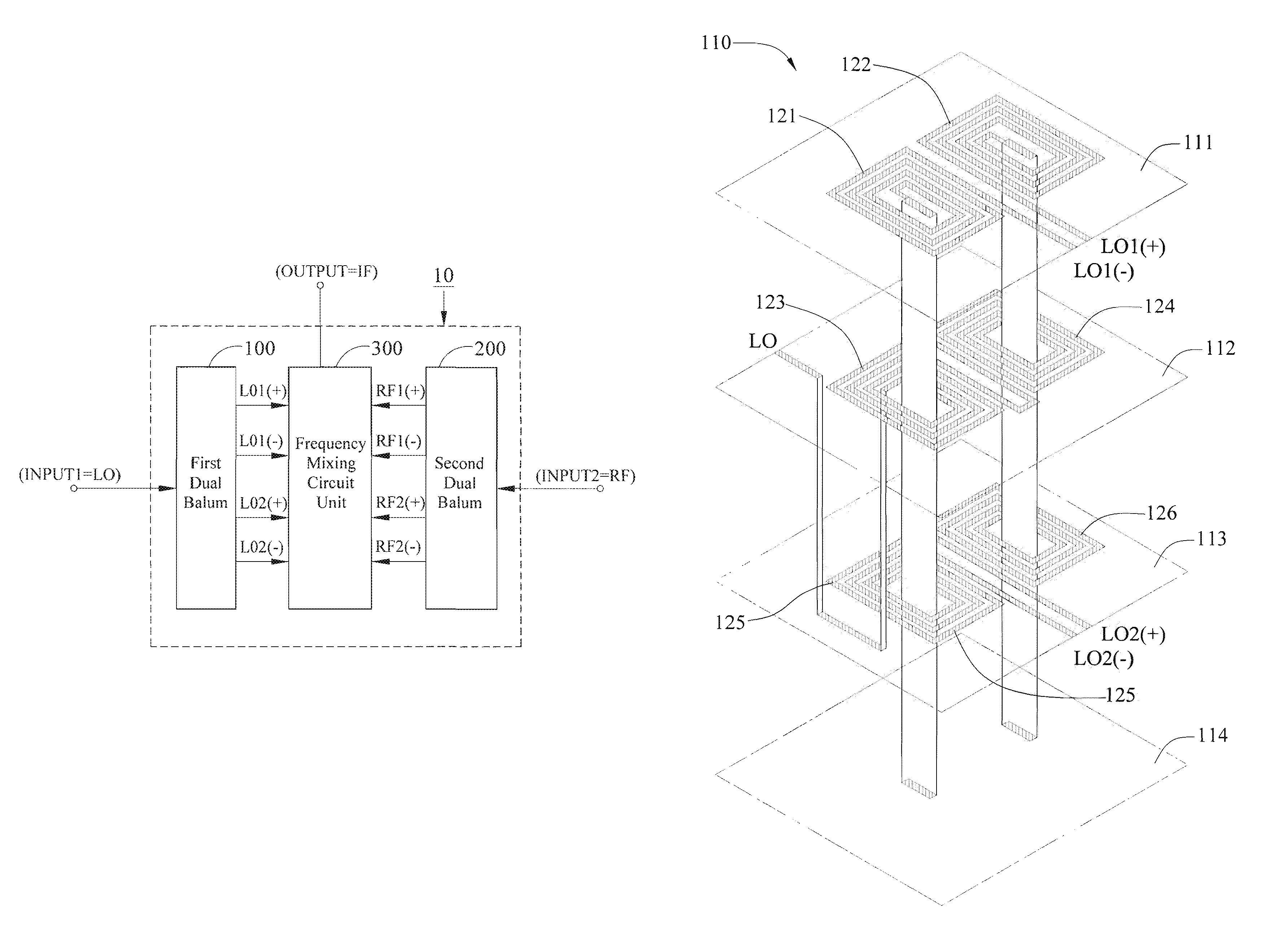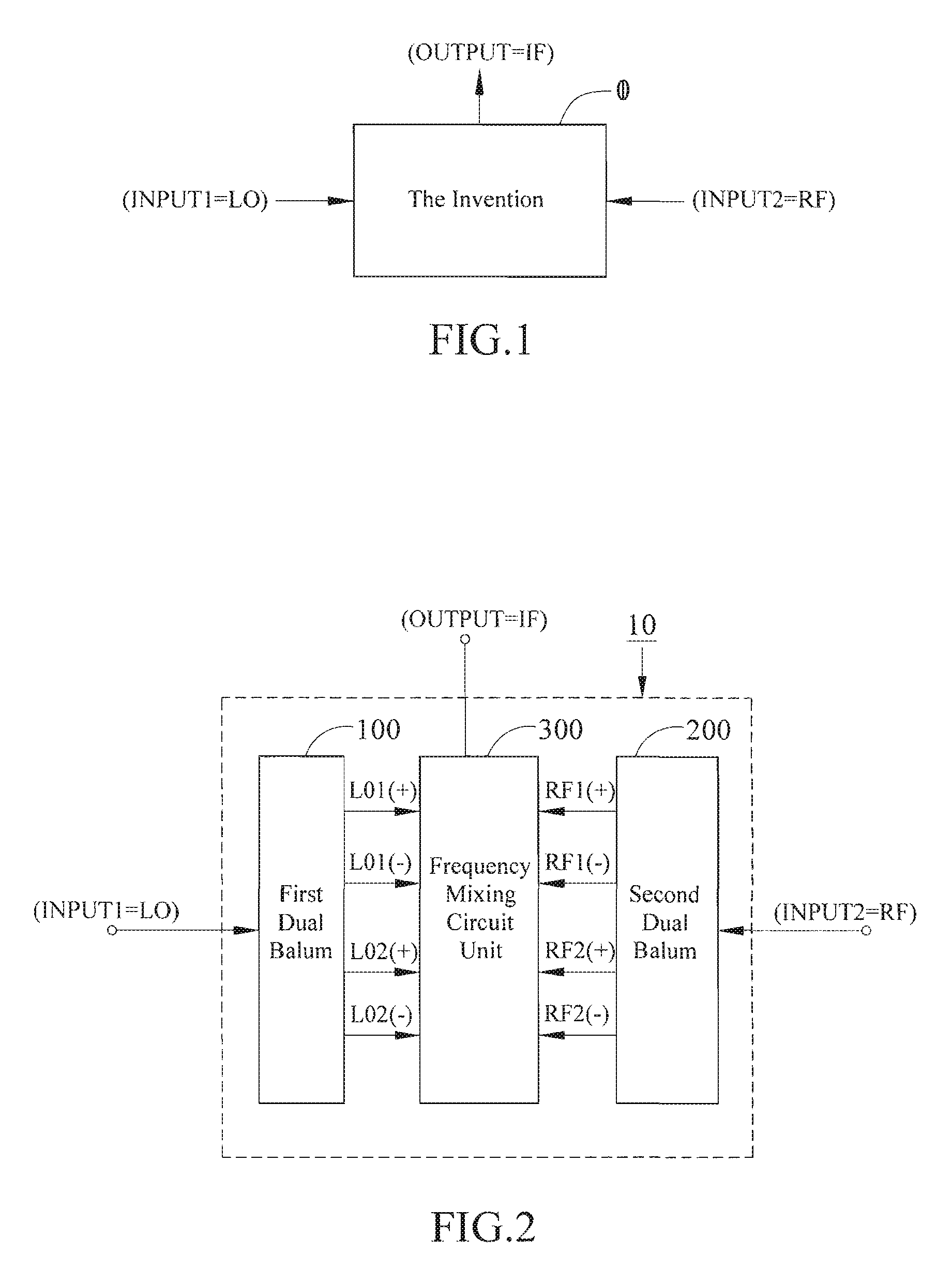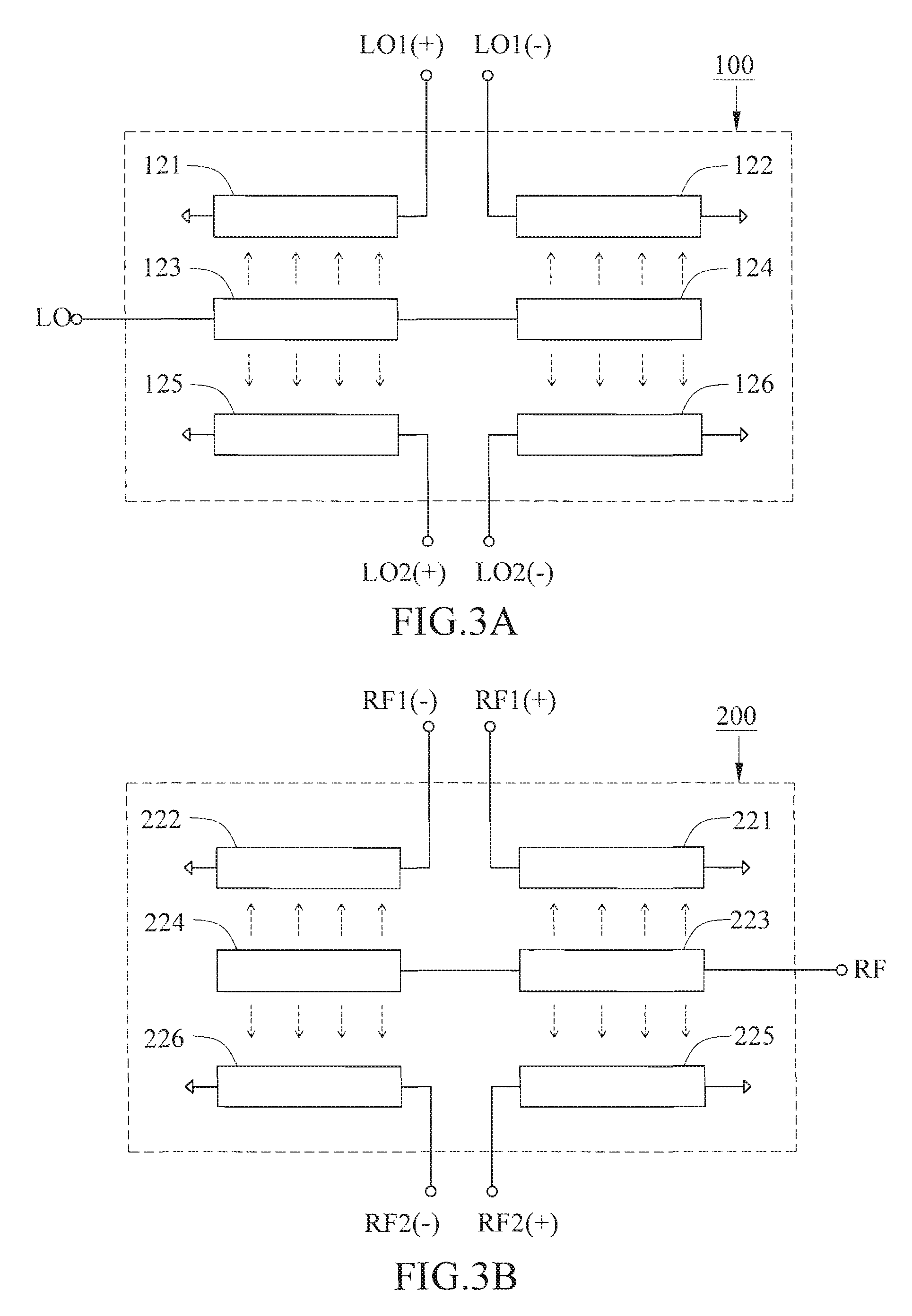Miniaturized dual-balanced mixer circuit based on a multilayer double spiral layout architecture
a layout architecture and mixer technology, applied in the field of miniaturized dual-balanced mixer circuits, can solve the problems of unsuitable use in the fabrication of miniaturized ic chips, and achieve the effect of reducing layout spa
- Summary
- Abstract
- Description
- Claims
- Application Information
AI Technical Summary
Benefits of technology
Problems solved by technology
Method used
Image
Examples
first embodiment
[0038]As shown in FIG. 4A, the frequency-mixing circuit unit 300 is based on a diode-switched circuit architecture which is composed of 4 diodes arranged in a particular manner that allows the generation of the intermediate-frequency signal IF in response to [LO1(+), LO1(−), LO2(+), LO2(−)] and [RF1(+), RF1(−), RF2(+), RF2(−)]. This diode-switched circuit architecture is based on a conventional circuit arrangement used in conventional star-type DBM circuitry, so that detailed description thereof will not be given in this specification.
(C2) Transistor-Switched Circuit Architecture (Frequency-Mixing Circuit Unit 300)
second embodiment
[0039]As shown in FIG. 4B, the frequency-mixing circuit unit 300 is based on a transistor-switched circuit architecture which is composed of 4 transistor-based circuit modules (each including a transistor, a resistor, and a capacitor) that are arranged in a particular manner to allow the generation of the intermediate-frequency signal IF in response to [LO1(+), LO1(−), LO2(+), LO2(−)] and [RF1(+), RF1(−), RF2(+), RF2(−)]. This transistor-switched circuit architecture is also based on a conventional circuit arrangement used in conventional star-type DBM circuitry, so that detailed description thereof will not be given in this specification.
Operating Characteristics of the Invention
[0040]FIG. 8A is a graph showing the insertion loss versus RF characteristics of each of the first balun circuit unit 100 and the second balun circuit unit 200 resulted from both circuit simulation and actual testing. It can be seen from this graph that in the frequency range from 25 GHz to 45 GHz, each of ...
PUM
 Login to View More
Login to View More Abstract
Description
Claims
Application Information
 Login to View More
Login to View More - R&D
- Intellectual Property
- Life Sciences
- Materials
- Tech Scout
- Unparalleled Data Quality
- Higher Quality Content
- 60% Fewer Hallucinations
Browse by: Latest US Patents, China's latest patents, Technical Efficacy Thesaurus, Application Domain, Technology Topic, Popular Technical Reports.
© 2025 PatSnap. All rights reserved.Legal|Privacy policy|Modern Slavery Act Transparency Statement|Sitemap|About US| Contact US: help@patsnap.com



